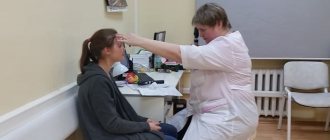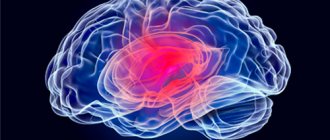The procedure for referral to medical examination for psychiatric diseases
Citizens with the described ailments undergo a standard step-by-step examination, that is, the procedure is the same as for other patients (sometimes with differences). In general, an applicant for the disability group will have to:
— collect a package of required documents;
— submit them to the ITU Bureau along with the application;
— undergo the necessary examinations, tests, etc.;
— wait for the verdict of the medical board.
Basically, the patient must attend the ITU in person, and only in exceptional cases is the group given in absentia.
Documents required for registration of disability
The package of documents for passing the examination usually includes:
— passport (and copy);
- outpatient card;
— application and referral for medical examination (the latter is issued by a doctor);
— certificate of income for 6 months (for employed people);
— a copy of the work book certified by the personnel officer;
- characteristics from the place of study or work.
Important
! If a guardian is caring for the patient, you will need his documents and a power of attorney stating that he can act on behalf of the ward.
Terms of consideration
After the decision is made, the citizen will be notified of the results of the examination immediately (on the spot), if present in person. In case of refusal to give a group, the commission members must explain the reason. If the decision is positive, the patient receives a certificate and an IPR. This program is compiled individually and has its own characteristics, which are discussed below.
Basic criteria for obtaining disability for mental illness
Despite the characteristics of mental illnesses, the assessment is based on the same three groups with predetermined criteria:
- Group 1 is established if constant monitoring and care of the patient is necessary. Usually assigned to incapacitated citizens who cannot take care of themselves and be responsible for their actions. The first group is prescribed for diseases of high severity, such as the final stages of schizophrenia or severe damage to the central nervous system;
- Group 2 - pronounced disorders that interfere with the patient’s life. At the same time, a person with the second group of disabilities is capable of working and learning, albeit with outside help. Most often given to people with dementia, hallucinations and delusions, clinical depression;
- Group 3 - minor mental disorders that limit a person’s life and work, but in general do not deny the possibility of successful social adaptation. The third group of disability for mental illness is assigned to psychoses, moderate disabilities, and problems with mental development.
Obtaining a group is determined both by the general provisions of Federal Laws No. 181, 166 and 46, as well as by Russian Government Decree No. 95, and by additional documents, such as Order of the Ministry of Health No. 117. Most often, additional regulations describe the procedure and features of working with people suffering from mental illness .
The list of diseases that can qualify for disability includes:
- Paralysis combined with dementia;
- Epilepsy with dementia;
- Severe diseases of the central nervous system;
- Schizophrenia in the final stages;
- Chronic disturbances in brain function due to injury.
Are there working groups?
The second and third disability groups do not exclude social and labor adaptation under the supervision of a doctor. The purpose of disability as a social institution is to provide help to people who need it, and not to create a stigma for years to come.
The third group is allowed to do light work - mental disorders in this case are serious enough to prevent a person from living a full life, but are not sufficient to make a decision to isolate him. Cases in the second group are analyzed individually, but with stable remission, problems with rehabilitation also do not arise.
Only those who have received the first group are prohibited from working directly - such people are mostly considered incompetent.
Individual rehabilitation program for a disabled person
The IPR is compiled by ITU specialists according to the needs of the person being examined. The document contains information about methods and programs of social support. For example, the program may include data regarding assistance in various areas:
- legal services;
— hygiene supplies;
— psychological consultations;
- accompanying social worker;
— technical means of rehabilitation.
Important
! These types of assistance are provided to the recipient at the place of registration.
Disability groups
In all developed countries, increasing attention is paid to both primary and secondary prevention of cancer. According to world practice, 30% of financial resources are allocated for prevention, 50% for treatment, and 20% for rehabilitation. At the same time, in Russia, 6% of compulsory health insurance funds are spent on prevention and 94% on treatment.
The overall incidence rate of malignant neoplasms increased by 5% compared to 1993 and amounted to 211.3 per 100,000 population. The growth is due to an increase in the incidence rate of the female population (an increase of 13.4%). At the same time, there is an increase in cancer incidence among young people.
More attention should be paid to the early diagnosis of malignant neoplasms and the development of government screening programs.
The demand for effective measures aimed at improving the situation, preserving and strengthening the health of the population requires, in the opinion of leading oncologists, improvement of the organizational framework for providing oncological care and the regulatory legal framework.
Each person who, in his personal experience or through his loved ones, has encountered the problem of cancer and its consequences must navigate the legal framework for the provision of appropriate assistance by the state, the allocation of compensation and benefits.
In case of oncological diseases, a patient is recognized as disabled if, despite the treatment, his vital activity remains limited, and an unfavorable or questionable clinical and work prognosis remains due to the progressive course of the disease.
Disability groups
The first disability group is determined by persons who have a social disability that requires social protection and assistance due to a health disorder with a persistent, significantly pronounced disorder of body functions, leading to a pronounced limitation of one of the following categories of life activity:
- third degree self-care ability;
- ability to move third degree;
- ability to communicate third degree;
- third degree ability to control one's behavior;
- third degree orientation ability.
At the same time, it is not at all necessary that all of the listed types of life activity be expressed by the highest degree of impairment. These disorders can occur in almost all stage III-IV cancers, in the presence of regional and distant metastases, and in case of relapse of the oncological process. Medical and social examination after symptomatic treatment does not cause difficulties.
The second disability group is determined by persons who have a social disability requiring social protection or assistance due to a health disorder with a persistent severe disorder of body functions:
- ability for self-care of the second degree;
- ability to move second degree;
- ability to work third, second degree;
- ability to learn third, second degree, i.e. ability to study only in special educational institutions or according to special programs at home;
- second degree orientation ability;
- ability to communicate second degree;
- ability to control one's behavior of the second degree.
In cancer patients, of the above, the first three types of disorders are of greatest practical importance.
About 70% of patients with malignant diseases are operated on at stage IIIB, with 10% at the age of 35 years, and 40-60% are diagnosed with low-grade cancer. Their clinical prognosis is often regarded as doubtful. During the initial examination, such patients should be assigned disability group 2.
The third disability group is determined by persons who have a social disability that requires social protection due to a health disorder that has led to a mild or moderately severe limitation of life activity:
- first degree self-care ability;
- ability to move first degree;
- ability to work first degree.
Other types of dysfunction in cancer patients when defining this group occur very rarely, and their practical significance is small.
This disability group can be established in a number of locations that have a favorable prognosis. They need only minor restrictions on work activities associated with certain physical activities, i.e. if there are contraindicated factors at work.
For a number of diseases in which a good result was obtained (some forms of lymphogranulomatosis, early stages of cancer of the body and cervix, stage I kidney cancer after kidney resection, etc.), with highly differentiated forms of tumors, satisfactory condition of patients and the absence of contraindicated factors in the work of the group they may not be diagnosed with disability.
Benefits and restrictions for people with mental illness
A mental anomaly and the corresponding status allow the owners of the group to count on financial support from the state and all sorts of preferences. In general, disabled people are provided with:
— free medicines and vouchers to a sanatorium;
— services of a social worker (if necessary);
- Opportunity to improve living conditions.
But in addition to the positive aspects, disability in itself and mental illness in particular implies certain restrictions. They should be taken into account if a disabled person takes out a mortgage, wants to become a guardian, etc.
For what diseases is the patient entitled to incapacity for work?
Sometimes patients turn to a psychiatrist with a request to apply for a pension. They report the inability to find a job, are interested in benefits, as well as what diseases qualify for disability. The commission decides to refer not all persons observed by a psychiatrist to MSE. For example, a patient with neurosis cannot count on being recognized as having lost his ability to work. However, if the symptoms of the disease are severe, he can undergo examination to change the diagnosis and conduct a labor examination.
The majority of people with mental illness suffer from the following disorders:
- schizophrenia;
- autism;
- oligophrenia (mental retardation);
- organic brain lesions;
- dementia (dementia);
- endogenous affective disorders.
In what cases is disability removed?
The special status can most often be removed in the event of a positive result from treatment and restoration of important skills. If the condition really improves, the attending physician may recommend not to extend the group after the expiration of the period. It also happens that, against the background of improvements, the ITU experts themselves appoint another group (demote it).
Finally, members of the commission have the right to irrevocably deprive a person of privileges along with a disability if the patient has provided false information about his health, knowing this in advance. In this case, the group will definitely not be extended or established.
Procedure for re-certification of disability due to mental illness
Re-examination, unlike obtaining a group, is carried out in a simplified manner. The only documents required are an IPR and a certificate of disability.
The procedure consists of two stages:
- Examination by doctors;
- Interview, on the basis of which a decision is made.
Since the vast majority of citizens entering the group with a mental illness have moderate and high severity of the disease, the commission often considers only the current condition and the possibility of remission.
Cases of complete recovery in the second group, and even more so in the first group, are extremely rare, so in many ways the commission here is a mere formality.
The first group undergoes recertification every two years, the second and third every year. The group is issued indefinitely only in case of irreversible organic brain damage, in which a return to normal life is virtually impossible.
In what cases can disability be lifted?
The criterion for assigning a group is the person’s ability to return to normal life. Full or partial improvement in social skills, return to work capacity and remission may become grounds for lowering the group or removing disability.
To increase or decrease the group, doctors need serious reasons: for example, a noticeable change in the patient’s condition. At the same time, a good or bad result at the commission itself may not mean anything - psychiatrists consider the disease “from a distance” and a recent sick leave with bad results can become a serious obstacle to the removal of disability.
Disability can also be removed by administrative methods - evading recertification or providing deliberately false documents at the time of registration can be grounds for automatic removal of the group.









